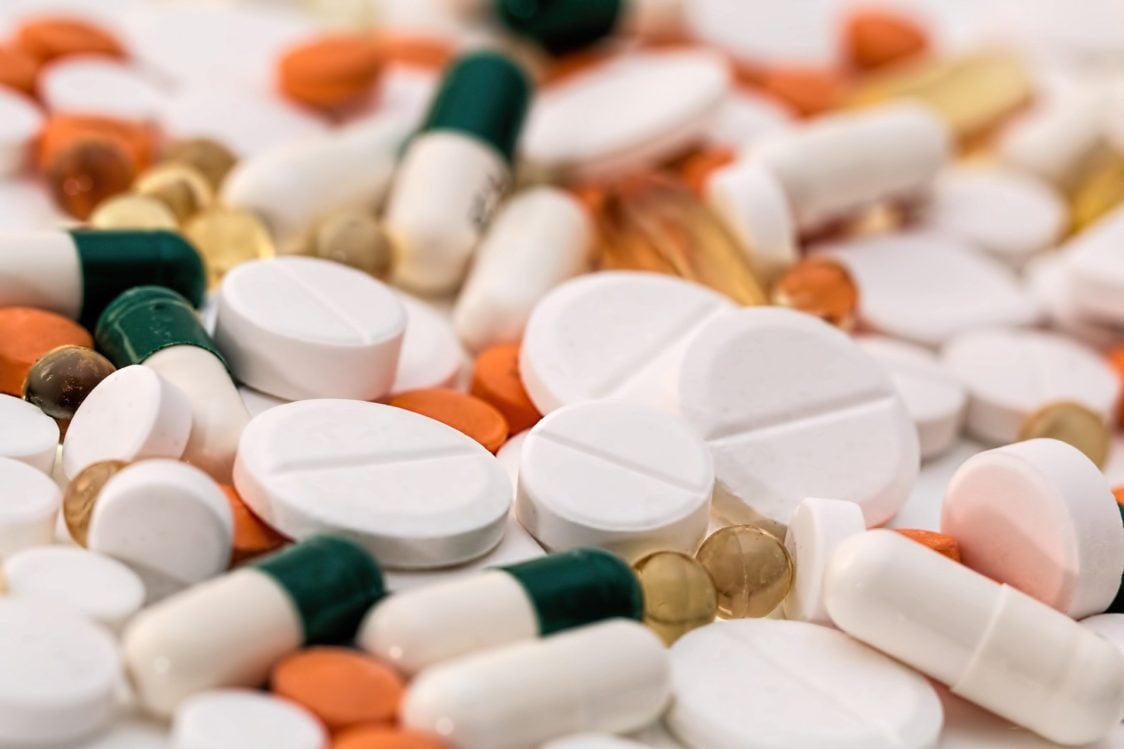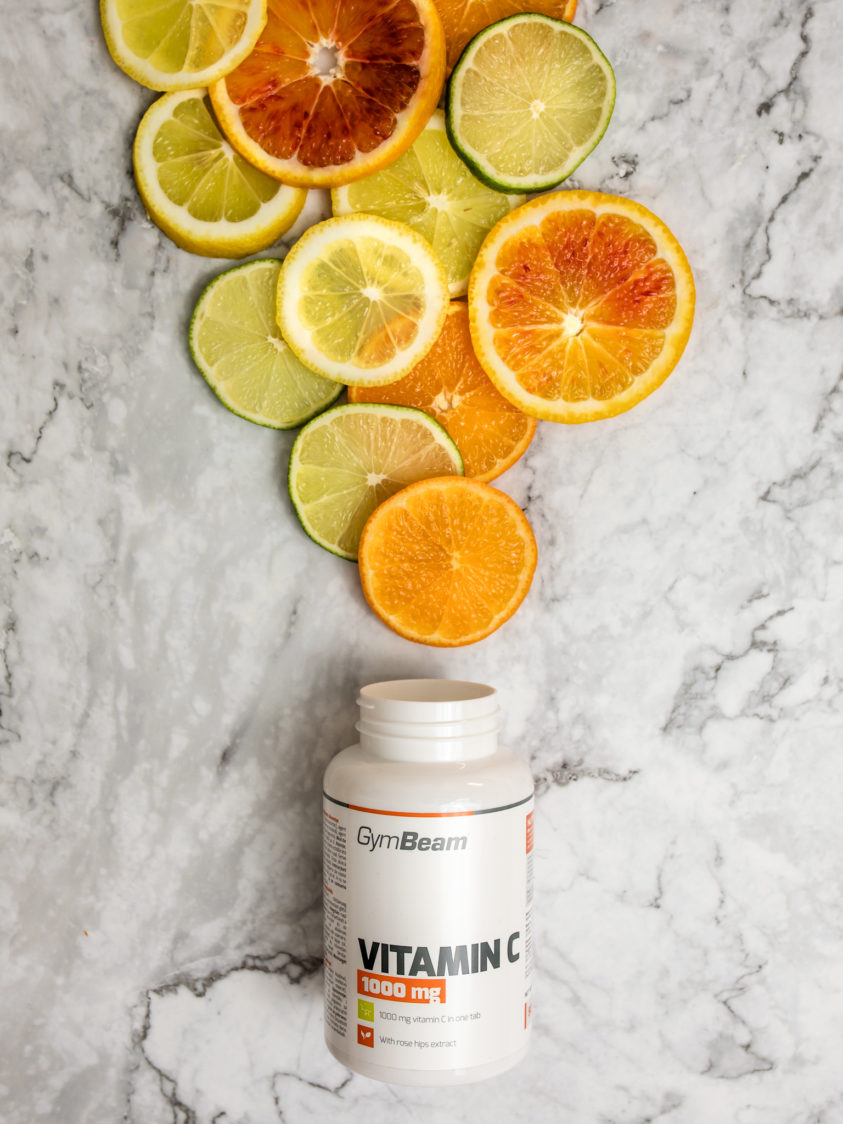Table of Contents
Liposomal nutritional supplements, especially vitamins and minerals, have been a hot topic lately. Is it a revolutionary discovery or just another artificially-created hype? In this article, we will introduce you to the nature of liposomes, and how this form of preservation of the active substance differs from conventional forms. In addition, you will learn about the results of research and the view of scientists on the liposomal supplements.
Liposomes
Liposomes are bilayer lipid-based vesicles that are able to encapsulate and transport small molecules with low solubility in the human body. In this way, it is possible to define a microscopic transporter into which you place a passenger, for example vitamin C, and thanks to the liposome, the passenger gets to the desired “destination station”. But let’s start nicely from the beginning. [1]
The vesicle is something like a container that is made up of a lipid bilayer and is designed to separate the contents from the cytoplasm or extracellular environment based on fluid. There are different types of vesicles containing liquids or gases. Liposomes are a type of spherical vesicle that may have one or more phospholipid bilayers. [2] [3]
The very meaning of the word liposome is derived from the Greek terms “lipos” and “soma”, which means “fat” and “body”. To give you an idea, the liposome is a “closed ball.” Its membrane is formed by the already mentioned lipid bilayer, which is composed of two layers of closely arranged phospholipids. They have two parts – the head and the tail, which are quite different from each other. While the heads are hydrophilic – the tails are lipophilic. So the heads “love water” and the tails “adore fat”. The lipid bilayer is formed by joining two separate membranes by “pulling” the tails together. The hydrophilic heads are turned away from each other and attracted by the surrounding water, creating a membrane. [4] [5]
Liposomal products have been a hit in recent years, but the liposomes themselves are a little older. They were first described by Alex Bangham in 1961, and since then scientists have been researching their use. Today, their application is introduced in the field of gene distribution, biomolecules and probably the best known – drug distribution. Their importance is also confirmed by the fact that this is the first nano drug delivery system that has been successfully utilized into clinical use. Nano technologies are in themselves a very interesting topic, so it is not uncommon for this transmission system to be interesting in several areas. Researchers have investigated its use for the purpose of delivering anti-inflammatory, antifungal or anti-cancer genes. In addition, they are nowadays a useful tool for several scientific disciplines, not only chemistry and biology, but also theoretical physics, biophysics or mathematics. [3] [6]

The discovery of a new way of distributing active ingredients has logically opened up many possibilities for use. The aim of the article is to introduce this form and point out its advantages and disadvantages in comparison with the classical form.
Types of liposomes
An important attribute of liposomes is their size, which can vary. They may have one or more bilayer membranes, and their vesicles may be 0.025 μm (small) to 2.5 μm (large). Liposomes are divided into 3 types, which are used for other drugs and target cells [3] [7]:
- Multilamellar vesicles (MLV)
- Small unilamellar vesicles (SUV)
- Large unilamellar vesicles (LUV)
Unilamellar vesicles have 1 phospholipid bilayer that coats the aqueous solution. Multilamellar vesicles logically have several layers (one in the other) and are separated by a layer of water. You can imagine the shape of multilamellar liposomes as an onion or a matryoshka doll. The size or structure of liposomes is important because it determines how much encapsulated substance is in it, but also the half-life. [3]

In addition to size and shape, liposomes may also differ in the phospholipids used in the preparation [8]:
- Phospholipids from natural sources
- Modified natural phospholipids
- Semisynthetic phospholipids
- Fully synthetic phospholipids
- Phospholipids with “unnatural” groups of heads
Advantages and disadvantages of the liposomal form
The liposomal form is an interesting alternative, but along with advantages it also has disadvantages. This is due, for example, to a wide range of products of different quality. For a better overview, we present their strengths and weaknesses [9] [10]:
Benefits of liposomes:
- practical for the consumer
- beneficial for people with trouble swallowing a tablet
- the same effect at a lower dose
- have higher bioavailability
- higher oral absorption and lymphatic absorption
- higher cell delivery
- ability to transport both hydrophobic and hydrophilic components

Disadvantages of liposomes:
- higher costs
- production problems, such as high particle size
- instability of some products
Liposomal supplements
The liposomal form of drugs finds its application in various branches of pharmacology and medicine, while nutritional supplements are one of these areas. There is a wide range of vitamins and other nutrients on the market in liposomal form. But are liposomal supplements better? The best source of relevant information is research, so we have prepared the results of several studies that have tested the functionality of liposomal forms of supplements.
One of the nutrients studied was, for example, vitamin B12, the deficiency of which is a common problem for people, regardless of age. The classic way to treat vitamin B12 deficiency is by intramuscular injection, so researchers have studied the change in vitamin levels with liposomal supplementation. The study involved 53 people of both sexes, and the study lasted approximately 7 months. The participants were “non-vegetarians” over the age of 50 and were given vitamin B12 sublingually 3 times a day, with a daily dose of 1000 μg of methylcobalamin. According to the results, after the first week, B12 levels increased on average by 54.68%, after a month by 105.51%, and after 2 months by up to 270%. Thus, supplementation of the liposomal form of B12 clearly makes sense. It is a pity that this research did not include a comparison with the common “non-liposomal” form, as they themselves state, it would be interesting to verify whether the liposomal form is better than the conventional one. [12]

In addition to vitamins, other nutrients, such as the mineral magnesium, are found in liposomal form. A 2018 study examined the bioavailability of magnesium in Sucrosomial® magnesium. It is a product whose component is magnesium oxide protected by a liposome-like structure. The study consisted of two methods, one examining the absorption of magnesium in the intestinal mucosa isolated from rats. However, we were more interested in the results of the second method, which was implemented on people. Participants were given 350 mg of magnesium in 4 forms – Sucrosomial® magnesium, magnesium citrate, magnesium oxide or magnesium bisglycinate. Magnesium levels in blood, red blood cells and urine were measured. According to the study, the Sucrosomial® magnesium form resulted in higher bioavailability than the other forms. In conclusion, further research is needed for higher clinical efficacy. Even so, this means that not only vitamins but also the mineral magnesium in liposomal form is a more effective option than conventional tablets. [14] [15]
Magnesium is an important mineral and its range of action may be wider than you realize. To learn more about magnesium, read the article – Magnesium will affect your health and muscle mass.
You might be interested in these products:
Liposomal form of vitamin C

One of the popular liposomal products is vitamin C, which has several functions in the body and is present in many processes. Vitamin C can be taken orally as well as intravenously, but in both cases there is a problem. Vitamin C administered intravenously has been shown to reduce oxidative stress. In addition, however, according to a 2016 study, it can also improve physiological functions in adults. Where’s the problem? The oral form of the vitamin is less effective than the intravenous one, which may be due, for example, to its lower bioavailability. Intravenous administration is effective but also invasive, and I don’t know about you, but I’m not a big fan of needles. A possible alternative might be vitamin C in liposomal form, the effectiveness of which was investigated in the study. [11]
The study involved 11 participants, who were divided into 4 groups – 1. placebo, 2. oral unencapsulated form, 3. oral form encapsulated in liposomes and 4. intravenous form. The study results in better bioavailability of vitamin C in liposomal form than in conventional unencapsulated form. According to the results, the concentration of vitamin C in the bloodstream was higher in the encapsulated form in liposomes than in the non-encapsulated form, but lower than in the case of intravenous administration. It is therefore clear that the absorption of vitamin C is indeed better in liposomal form. [11]
According to a 2016 study, the liposomal form of vitamin C could be of interest to athletes. They have a higher tendency to suffer from upper respiratory tract infections caused by training stress. Vitamin C is effective in reducing the symptoms, but also the occurrence of colds not only in athletes, but in general in people with physical stress. The liposomal form may therefore address the limitations associated with nutrient absorption and bioavailability. The results indicate that there are only a few studies that map the absorption and health effects of liposomal products, and no sports-oriented research. It would definitely be interesting to compare the effectiveness of vitamin C in various forms in athletes with endurance or strength training. We believe that this is already being worked on somewhere and we will soon receive positive information about the importance of the liposomal form of vitamin C. [13]

Vitamin C is key to full health for its participation in several processes. Want to learn more about it? Read our article – Vitamin C: everything you need to know about it until it’s too late.
Disadvantages of liposomal “miracle”
If you thought we were too positive so far, that’s true. The liposomal form is a great opportunity in itself, but rarely new discoveries are found that will be completely free of negatives. It is therefore fair to point out the possible disadvantages that may be associated with the use of liposomal products.
Phospholipids in liposomes
If you remember, in one of the previous chapters we state that the phospholipids used to encapsulate the active ingredient can be from different sources. Lipids are essentially fats, and not all fats are beneficial to the body. Phospholipids consist of fatty acids and phosphates, and these can be unsaturated as well as saturated, which are not desired fats. In this case, it depends on the product, for example, there are liposomal forms with sunflower phospholipids, which are healthy because they contain unsaturated fatty acids. If you can, check the origin of the phospholipids in these products. [16]
Different quality of liposomes
Liposomes are spherical vesicles, as well as emulsions, because the emulsion is a combination of oil and water. However, the opposite is not true, and therefore not all emulsions are also liposomes. It is therefore not enough to combine vitamin C powder, lecithin and distilled water at home, use ultrasound, and you will get a liposomal form of vitamin C. Nutritional supplements containing vitamin and phospholipids may be an emulsion, but may not be liposomal supplements. In addition, the size of the liposome is important, as smaller liposomes have shown significantly higher absorption. One study even states that by reducing the size of liposomes from 236 nm to 97 nm, cell uptake increased up to 9-times and even 34-times when reduced to 64 nm. In the case of liposomes, therefore, we can say that size matters. [17]
More and more new products with different production processes are constantly appearing on the market. Even in the case of liposomal products, it is important to look at quality and differentiate. Are you considering buying vitamin C in liposomal form? Avoid vitamin C esters when choosing, such fat-soluble forms of vitamin C include, for example, cetyl ascorbate, ascorbyl oleate or ascorbyl palmitate. The reason for choosing other forms is that they have little or no advantage over conventional vitamin C. Try to focus your attention on liposomal nutritional supplements (formed or pro-liposomal) containing vitamin C and phospholipids, such as phosphatidylcholine. It is a substance found in food, such as sunflowers, eggs or soy. [18] [19]
If you are not a supporter of GMOs or have a certain intolerance, pay attention to the source of vitamin C and focus on vitamin C without GMOs, gluten, soy and dairy products. [18]
The aim of the article is to present the liposomal form of drugs, to point out the advantages and disadvantages, and to provide research results. There are not many studies focused on nutritional supplements, and from the available sources we can say that liposomal supplements have the advantage of better bioavailability. It is therefore possible that by taking this form you will take in more nutrients than in the classic form of tablets or capsules. However, this does not mean that all common supplements belong to retirement. Liposomal products also have their disadvantages, and therefore conventional tablets will remain popular. However, it will be interesting to follow future research in this area, which may come up with more products. It would be great if liposomal nutritional supplements were able to contain especially poorly absorbed nutrients. Do you want your friends to know about the liposomal form of medicines and nutritional supplements? Feel free to support the article by sharing.
[1] Nikolay Dimov, Elisabeth Kastner, Maryam Hussain, Yvonne Perrie, Nicolas Szita – Formation and purification of tailored liposomes for drug delivery using a module-based micro continuous-flow system – https://www.nature.com/articles/s41598-017-11533-1
[2] Vesicle – https://biologydictionary.net/vesicle/
[3] Abolfazl Akbarzadeh, Rogaie Rezaei-Sadabady, Soodabeh Davaran, Sang Woo Joo, Nosratollah Zarghami, Younes Hanifehpour, Mohammad Samiei, Mohammad Kouhi, Kazem Nejati-Koshki – Liposome: classification, preparation, and applications – https://www.ncbi.nlm.nih.gov/pmc/articles/PMC3599573/
[4] Benedette Cuffari – What is a Liposome? – https://www.news-medical.net/life-sciences/What-is-a-Liposome.aspx
[5] Liposome – https://biologydictionary.net/liposome/
[6] Upendra Bulbake, Sindhu Doppalapudi, Nagavendra Kommineni, Wahid Khan – Liposomal Formulations in Clinical Use: An Updated Review – https://www.ncbi.nlm.nih.gov/pmc/articles/PMC5489929/
[7] Yolanda Smith – Liposome Uses – https://www.news-medical.net/life-sciences/Liposome-Uses.aspx
[8] Hadis Daraee, Ali Etemadi,Mohammad Kouhi, Samira Alimirzalu, Abolfazl Akbarzadeh – Application of liposomes in medicine and drug delivery – https://www.tandfonline.com/doi/full/10.3109/21691401.2014.953633
[9] Christopher W. Shade – Liposomes as Advanced Delivery Systems for Nutraceuticals – https://www.ncbi.nlm.nih.gov/pmc/articles/PMC4818067/
[10] Christopher Shade – The Secret To Effective Liposomal Delivery – https://www.naturalmedicinejournal.com/blog/secret-effective-liposomal-delivery
[11] Janelle L. Davis, Hunter L. Paris, Joseph W. Beals, Scott E. Binns, Gregory R. Giordano, Rebecca L. Scalzo, Melani M. Schweder, Emek Blair, Christopher Bell – Liposomal-encapsulated Ascorbic Acid: Influence on Vitamin C Bioavailability and Capacity to Protect Against Ischemia–Reperfusion Injury – https://www.ncbi.nlm.nih.gov/pmc/articles/PMC4915787/
[12] Ilias Katsogiannis, Nikolaos Fikioris, Christos Kontogiorgis, Theodoros Constantinides – Evaluation of liposomal B12 supplementation in a case series study – https://www.oatext.com/evaluation-of-liposomal-b12-supplementation-in-a-case-series-study.php#gsc.tab=0
[13] Matthew F Higgins, Mariasole Da Boit – Liposomal Nanotechnology – A New Frontier for Sport and Exercise Nutrition? – http://medcraveonline.com/JNMR/JNMR-04-00098.pdf
[14] Jennifer Prince – Liposomal Magnesium Is Better Absorbed than Standard Magnesium in New Study – https://www.nutritionaloutlook.com/science/liposomal-magnesium-better-absorbed-standard-magnesium-new-study
[15] E Brilli, S Khadge, A Fabiano, Y Zambito, T Williams, G Tarantino – Magnesium Bioavailability After Administration of sucrosomial® Magnesium: Results of an Ex-Vivo Study and a Comparative, Double-Blinded, Cross-Over Study in Healthy Subjects – https://pubmed.ncbi.nlm.nih.gov/29630135/
[16] Don’t waste your money on these supplements! Take the liposomal form! – https://www.actinovo.com/en/blog/don-t-waste-your-money-on-these-supplements-take-the-liposomal-form
[17] Everybody’s Talking About Liposomes—Here’s What You Need to Know – https://www.quicksilverscientific.com/blog/everybodys-talking-about-liposomes-heres-what-you-need-to-know/
[18] Bogdan Popa – How to Pick the Best Liposomal Vitamin C (Plus Risks + Benefits) – https://coremedscience.com/blogs/wellness/how-to-pick-the-best-liposomal-vitamin-c
[19] PHOSPHATIDYLCHOLINE – https://www.webmd.com/vitamins/ai/ingredientmono-501/phosphatidylcholine


Add a comment